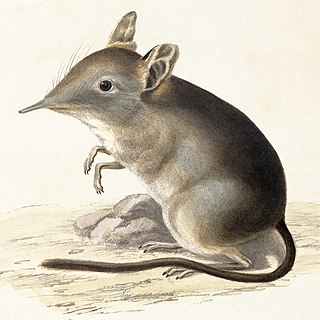Top Qs
Timeline
Chat
Perspective
Cape elephant shrew
Species of mammal From Wikipedia, the free encyclopedia
Remove ads
The Cape elephant shrew (Elephantulus edwardii),[2][3] also known as the Cape rock elephant-shrew[1][4] or Cape rock sengi,[1] is a species of elephant shrew in the family Macroscelididae. It is endemic to South Africa, although it is a relatively common animal. Its natural habitat is rocky areas.[1] Elephant shrews are not closely related to true shrews, nor to rodents such as mice.[3] E. edwardii has been observed to be a non-flying mammal pollinator of the pagoda lily (Massonia bifolia). Elephant shrews are floral pollinators due to their largely insectivorous diet.[5] Elephant-shrews are pollinators of Hyobanche atropurpurea.[6] It uses its long slender tongue to feed on the pagoda lily's nectar while getting the lily's pollen on its long nose.[4] E. edwardii is also a pollinator of Protea sulphurea.[7]
Remove ads
References
Wikiwand - on
Seamless Wikipedia browsing. On steroids.
Remove ads


